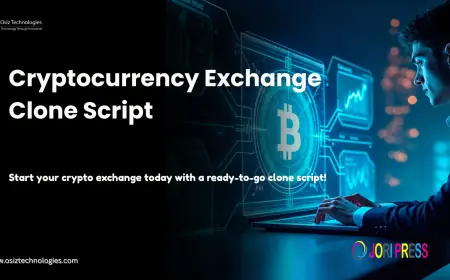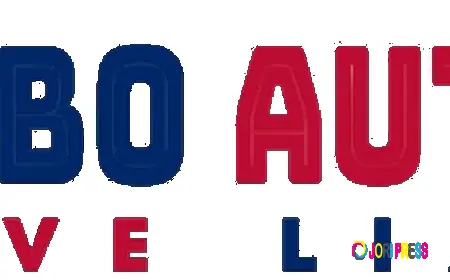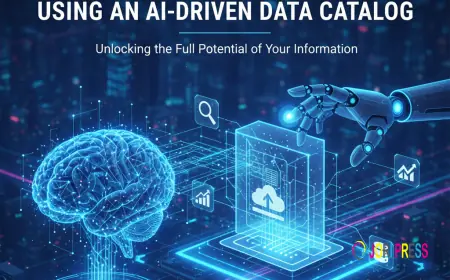How AI Token Standards Are Evolving to Power Smarter Crypto Ecosystems
As artificial intelligence continues to reshape industries, its integration into blockchain technology is ushering in a new era of smarter, more autonomous crypto ecosystems. At the heart of this transformation lies the evolution of AI token standards—protocols that define how AI-powered tokens are created, governed, and interact within decentralized systems. These standards are no longer just about issuing digital assets; they’re about embedding intelligence, interoperability, and automated decision-making into the very fabric of crypto projects. From self-learning DeFi protocols to AI-driven governance and autonomous agents, the next generation of tokens is redefining what’s possible in Web3.
In this blog, we explore how AI token standards are evolving, what differentiates them from traditional token formats, and how they’re shaping more dynamic, intelligent ecosystems across DeFi, DAOs, NFTs, and beyond. We also examine real-world use cases, emerging protocols, and the implications for developers, investors, and startups looking to build on the AI–blockchain frontier.
What Are AI Token Standards?
Token standards serve as the blueprint for creating and managing crypto tokens. In the context of AI tokens, these standards go beyond ERC-20 or ERC-721 definitions. They incorporate mechanisms for on-chain AI processing, interaction with machine learning models, dynamic parameter adjustments, and integration with autonomous agents.
AI token standards enable features such as:
-
Embedded machine learning logic within smart contracts
-
Adaptive behavior based on real-time data
-
Secure model training and inference on-chain
-
Agent-based interactions across protocols
Unlike standard tokens that are static and predefined, AI tokens are designed to evolve, adapt, and act autonomously. They are equipped to support complex logic, allowing for predictive finance, smart contract orchestration, and DAO decision optimization.
From ERC-20 to AI-Native Protocols: The Technical Evolution
The earliest token standards like ERC-20 and ERC-721 served as foundational blocks for fungible and non-fungible tokens respectively. However, these standards were not built to accommodate the requirements of AI interaction such as:
-
Continuous learning and adaptation
-
Real-time analytics
-
Access to off-chain computation and data
-
On-chain model verification
To address these gaps, newer frameworks and extensions have emerged:
a. ERC-725 & ERC-735 for Identity-Driven AI Agents:
These standards focus on decentralized identity and claims, providing a basis for agent-based AI tokens that can represent autonomous entities with verified credentials.
b. ERC-6149 (AI Agents Interface):
Still under discussion in several research circles, ERC-6149 proposes a standard for AI agents that operate as autonomous economic actors. This standard outlines interaction logic, model deployment, and behavioral contracts.
c. AI Layer Extensions (Fetch.ai, Bittensor):
Platforms like Fetch.ai and Bittensor introduce off-chain AI registries, decentralized training markets, and interaction layers that communicate with the blockchain via custom smart contract standards.
The shift is clear: AI tokens require enhanced metadata, real-time compute triggers, and modular smart contracts that reflect an evolving state rather than a static configuration.
Core Features of AI Token Standards
a. Real-Time Adaptability:
AI tokens can respond to market signals, user behavior, or predictive analytics by adjusting staking rewards, governance votes, or liquidity parameters. This enables more dynamic ecosystems that evolve in sync with real-world data and on-chain activity.
b. Interoperable Intelligence:
Smart agents powered by AI tokens can communicate across blockchains, sharing insights or executing actions based on federated learning or cross-chain inference. This creates a decentralized knowledge network where AI agents operate beyond isolated environments, amplifying token utility.
c. Modular Smart Contracts:
AI tokens often rely on modular architectures, allowing components like oracles, AI engines, or optimization layers to be upgraded without disrupting the main protocol. This future-proofs AI ecosystems and supports ongoing innovation without compromising network stability.
d. Off-Chain Compute Bridges:
AI tokens integrate with decentralized compute platforms (like Gensyn, Akash, or Bittensor) to access powerful GPUs and CPUs needed for model inference or training. These bridges optimize resource allocation, reduce costs, and support complex AI workloads in a decentralized manner.
e. Data Provenance & Model Verification:
To ensure trust in AI-driven decisions, token standards are increasingly integrating zero-knowledge proofs and verifiable computing to validate outcomes without revealing private data. This ensures transparency, enhances user confidence, and aligns with privacy-first regulatory frameworks.
f. Autonomous Agent Coordination:
Many AI token standards are designed to facilitate coordination among autonomous agents that can negotiate, transact, and collaborate independently. This unlocks new decentralized use cases, such as AI-driven DAOs, supply chain optimization, and adaptive DeFi protocols.
Use Cases: Where AI Token Standards Are Making an Impact
AI tokens are not just theoretical—they are already powering innovation across diverse sectors. Here are a few standout examples:
a. DeFi Optimization Agents (Fetch.ai, Autonolas):
AI tokens are used to run agents that optimize liquidity provision, predict impermanent loss, and rebalance portfolios autonomously in DeFi environments. These agents use predictive analytics and on-chain data to make faster, more accurate trading and risk management decisions than human participants.
b. AI-Powered DAOs (SingularityDAO):
Governance models enhanced by AI token logic can analyze proposal trends, predict voting behavior, and automatically prioritize proposals with the highest ecosystem impact. This reduces coordination inefficiencies and drives more meaningful community contributions in DAO governance.
c. AI Data Marketplaces (Ocean Protocol, NUMERAIRE):
Tokens serve as access credentials and reward mechanisms in decentralized data science marketplaces. Contributors are rewarded based on model accuracy, not speculation. AI token standards ensure fairness in scoring, incentivize quality over hype, and enforce transparency in model performance.
d. Supply Chain Intelligence (OriginTrail):
AI tokens embedded with semantic reasoning can dynamically validate supply chain data, automate risk assessments, and trigger insurance or logistics contracts based on predictive models. They bring real-time responsiveness to previously static logistics systems, reducing fraud, delays, and inefficiencies.
e. Decentralized Compute Networks (Bittensor, Gensyn):
Tokens in these networks act as incentives and validators in decentralized AI training, allowing models to be trained by distributed nodes with transparent performance evaluation. AI token standards ensure that contributors are fairly compensated and malicious models are penalized, improving system-wide robustness.
In each case, AI token standards ensure seamless integration, predictable behavior, and scalable deployment—turning tokens from passive assets into intelligent protocol participants that drive automation, optimization, and innovation.
Governance and Compliance in AI Token Design
With more intelligence comes more responsibility. As AI token standards evolve, so too must their approach to compliance, security, and governance. There are several considerations:
Governance Through AI Co-Pilots:
Rather than rely solely on human governance, AI token ecosystems are starting to implement AI governance co-pilots smart agents that help DAOs interpret proposals, assess risk, and guide voting strategies. These co-pilots streamline decision-making, reduce voter fatigue, and enhance policy foresight.
Ethical AI and Token Usage:
Token standards must incorporate ethical parameters that ensure AI agents do not make biased, harmful, or manipulative decisions especially in sensitive applications like health, finance, or public data. Mechanisms for bias auditing, red-teaming, and ethical override are becoming essential.
On-Chain Compliance Layer:
New standards are introducing compliance oracles that use AI to screen transactions for regulatory risks, prevent market manipulation, and flag suspicious patterns—all in a decentralized manner. These AI-powered tools are built to respect user privacy while enabling trustless compliance.
Adaptive Governance Models:
Token standards are also being used to facilitate liquid or quadratic voting, reputation-based consensus, and delegated learning—making governance smarter, not just democratic. These models allow for more nuanced expression of stakeholder preferences while minimizing whale domination or governance apathy.
AI token governance must evolve as rapidly as the technology itself. The challenge is to strike a balance between autonomy and accountability—ensuring that AI agents contribute to ecosystem health without becoming uncontrollable black boxes. By embedding transparency, auditability, and ethical constraints into token standards, developers can foster responsible innovation and build trust in AI-driven ecosystems.
The Future of AI Token Standards: Trends to Watch
The coming years will likely see major advancements in how AI token standards operate, both technically and conceptually. As AI continues to evolve alongside blockchain infrastructure, we can expect token standards to become more intelligent, privacy-preserving, and interoperable. These developments will not only expand the capabilities of smart contracts but will also drive new forms of decentralized governance, finance, and data coordination. Below are the most important trends shaping this future:
a. ZK-AI Integration:
The fusion of zero-knowledge proofs (ZKPs) with AI will allow for private model execution with public verifiability—creating trust without sacrificing privacy. Users can interact with AI systems, submit data, and receive verified outputs without revealing sensitive information. This is especially important in healthcare, finance, or legal applications, where privacy is paramount. ZK-AI will also enable “trustless explainability,” ensuring that AI decisions can be verified as fair, unbiased, and logically derived.
b. AI Model DAOs:
DAOs that manage, evolve, and monetize AI models via token governance will emerge, creating decentralized AI platforms governed by collective intelligence. These DAOs can handle model training, funding, deployment, and updates in a transparent, incentive-aligned manner. Token holders may vote on which models to upgrade, fine-tune, or monetize, turning communities into decentralized research collectives. This marks a shift from centralized AI monopolies to open, democratized ecosystems where value and innovation are co-created.
c. Composable AI Layers:
Composable AI protocols will allow developers to plug-and-play different models, agents, and logic into existing token frameworks, enabling rapid prototyping and cross-chain deployment. Much like DeFi’s “money legos,” AI layers will become interoperable components—language models, reasoning engines, optimization modules—that can be embedded into DApps, DAOs, and autonomous agents. This modularity will accelerate development cycles and facilitate real-time upgrades, personalization, and interoperability between AI systems.
d. AI Credit Scores and Identity Tokens:
Tokens could carry AI-generated identity scores for DeFi credit, voting rights, or access to high-signal communities—opening up new financial and social primitives. These scores may be derived from on-chain activity, contribution history, social behavior, or collaborative reputation systems. Unlike traditional credit bureaus, these AI-based identity systems will be transparent, customizable, and resistant to censorship. They could empower underbanked populations, improve DAO governance, and enable trusted interactions in anonymous environments.
e. Cross-Chain AI Protocols:
As multichain ecosystems grow, AI tokens that can operate across chains via bridges and relayers will become crucial to unifying Web3 intelligence. Cross-chain AI protocols will allow agents to aggregate data, make decisions, and execute actions across multiple networks—bringing intelligence to fragmented environments. For instance, a predictive AI agent trained on Ethereum could trigger a DeFi trade on Solana or manage a supply chain contract on Polygon. This capability will foster true interoperability for AI-driven smart contracts and agents.
Conclusion:
AI token standards are not just a technological curiosity—they represent a foundational shift in how value, intelligence, and automation are expressed in decentralized ecosystems. By embedding AI directly into token logic, we are moving toward autonomous token economies where smart agents, predictive systems, and decentralized AI networks collaborate seamlessly.
As these standards mature, they will unlock entirely new categories of crypto applications—autonomous DAOs, intelligent DeFi, agent-based marketplaces, and AI-governed protocols—ushering in a smarter, faster, and more equitable Web3 future. Startups, investors, and developers who align with these emerging standards early will be best positioned to lead this transformation. The age of intelligent tokenization is not on the horizon—it’s already underway.
What's Your Reaction?
 Like
0
Like
0
 Dislike
0
Dislike
0
 Love
0
Love
0
 Funny
0
Funny
0
 Angry
0
Angry
0
 Sad
0
Sad
0
 Wow
0
Wow
0















































